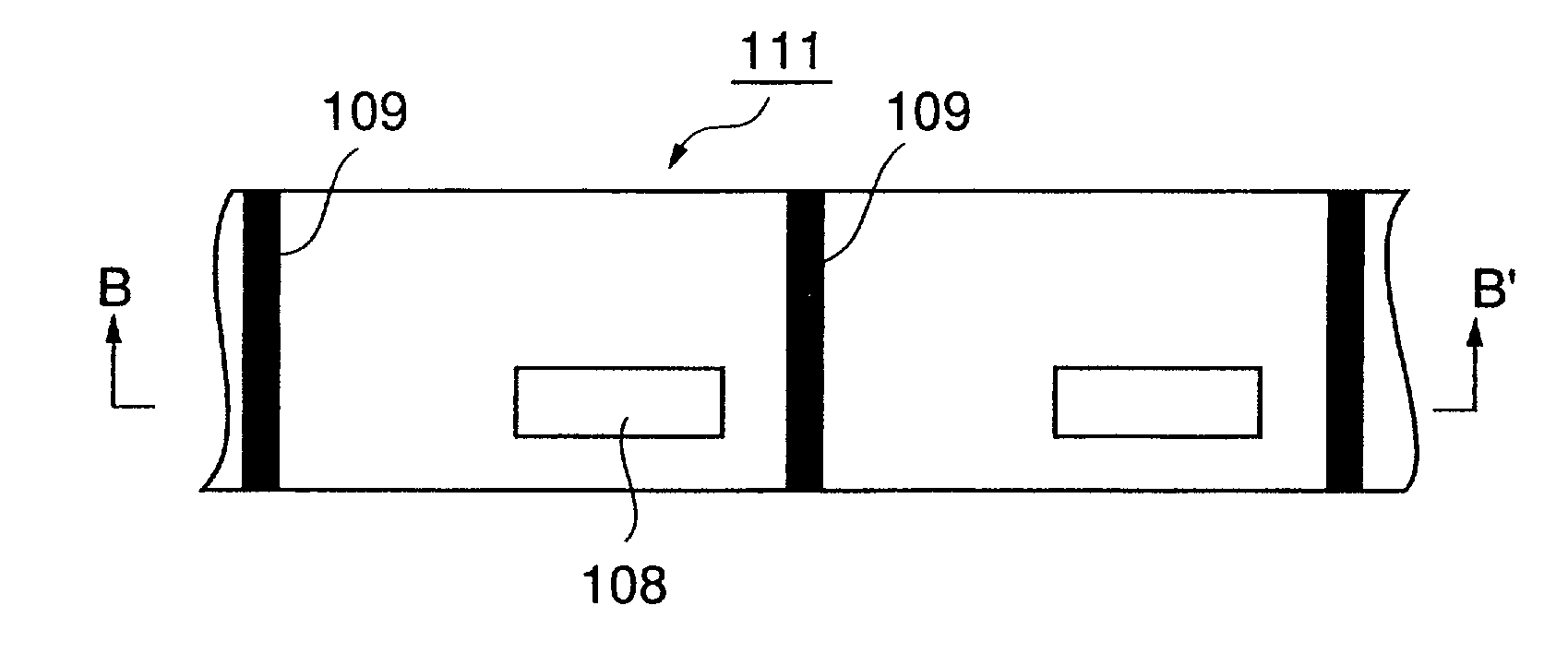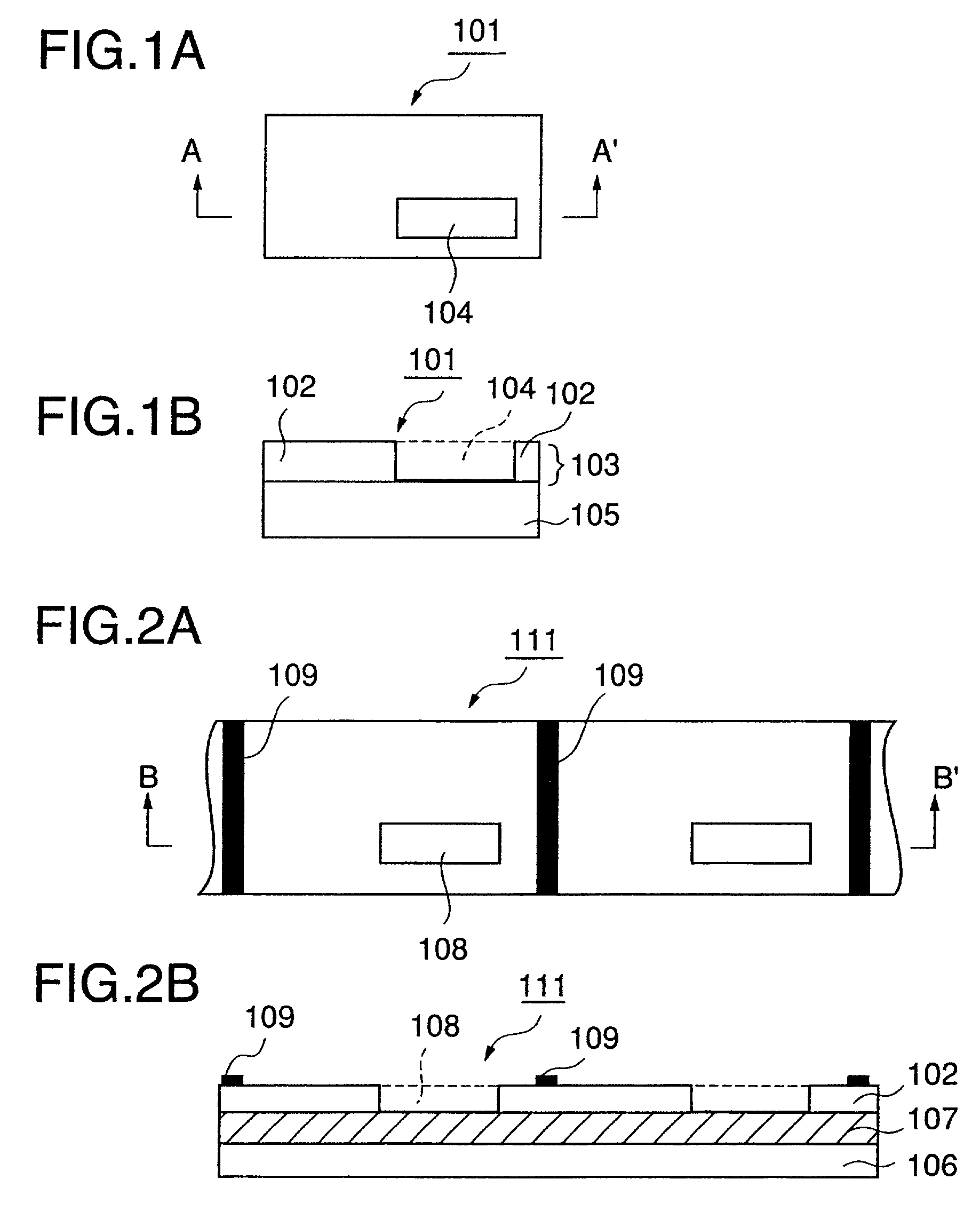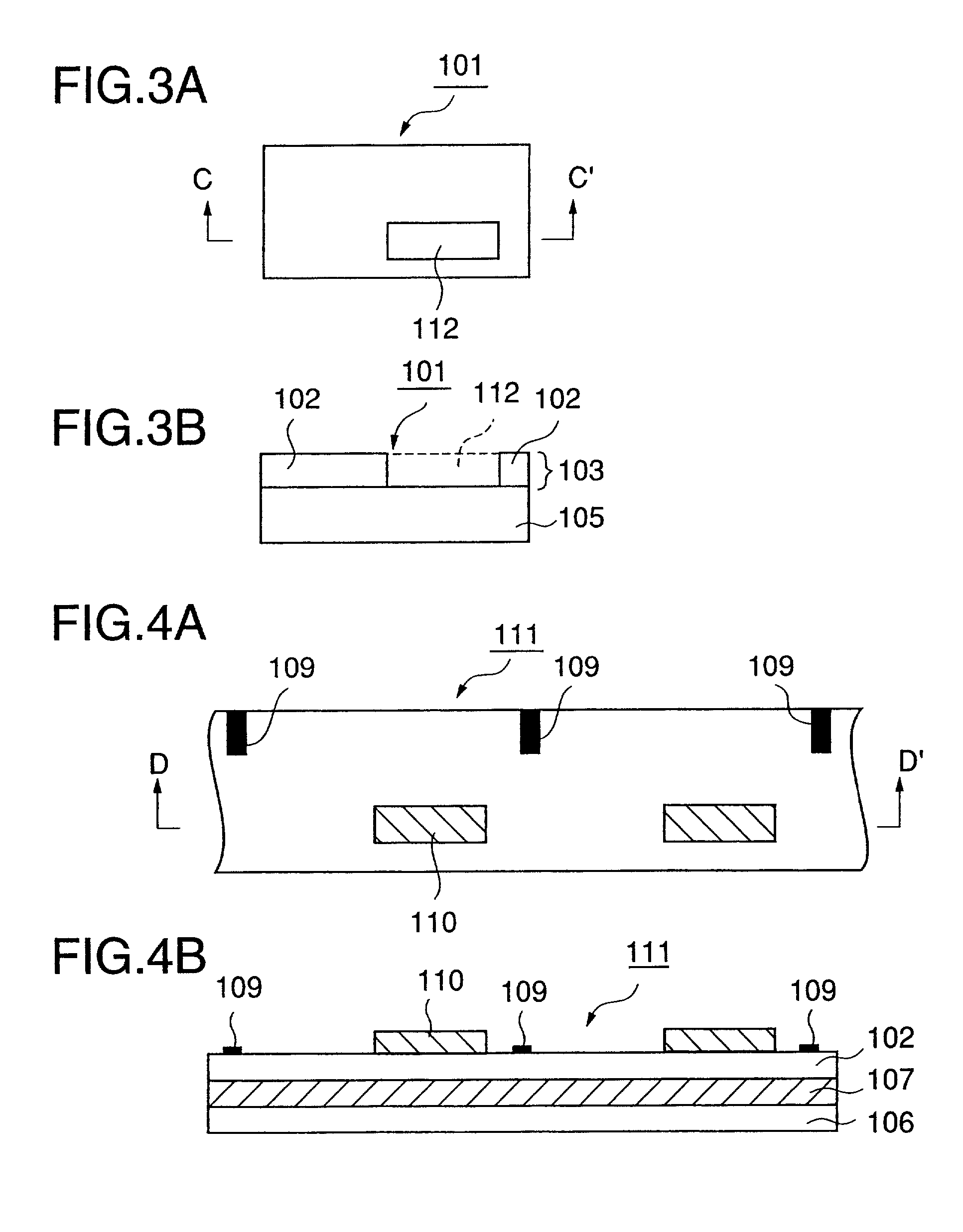Intermediate transfer recording medium, print, and method for image formation thereby
a technology of image formation and recording medium, applied in the field of intermediate transfer recording medium, can solve the problems of reducing quality, increasing opaqueness, deteriorating transparency, etc., and achieve the effect of preventing deterioration of performance upon post-treatment of that portion, increasing opaqueness, and deteriorating transparency
- Summary
- Abstract
- Description
- Claims
- Application Information
AI Technical Summary
Benefits of technology
Problems solved by technology
Method used
Image
Examples
example a1
[0125]A 12 μm-thick transparent polyethylene terephthalate film was first provided as a substrate film. The following coating liquid for a stripping layer was coated on the surface of the substrate film, and the coating was dried to form a stripping layer at a coverage of 2.0 g / m2 on a dry basis on the whole area of the substrate film. In the following description, “parts” or “%” is by weight unless otherwise specified.
[0126]
(Coating liquid for stripping layer)Acrylic resin (BR-83, manufactured88partsby Mitsubishi Rayon Co., Ltd.)Polyester resin1partPolyethylene wax11partsMethyl ethyl ketone50partsToluene50parts
[0127]Next, the following coating liquid for a receptive layer was coated in a pattern shown in FIGS. 1 and 2 onto the stripping layer, and the coating was dried to form a receptive layer pattern at a coverage of 2.0 g / m2 on a dry basis (a transfer portion 103 having a void portion 108).
[0128]
(Coating liquid for receptive layer)Vinyl chloride-vinyl acetate copolymer40partsAcr...
example a2
[0131]The same substrate film as used in Example A1 was provided. The same coating liquid for a stripping layer as used in Example A1 was coated onto the surface of the substrate film, and the coating was dried to form a stripping layer at a coverage of 2.0 g / m2 on a dry basis on the whole area of the substrate film.
[0132]Next, the same coating liquid for a receptive layer as used in Example A1 was coated on the stripping layer, and the coating was dried to form a receptive layer in a blotted form as shown in FIGS. 3 and 4 at a coverage of 2.0 g / m2 on a dry basis.
[0133]Next, a masking layer ink having the following composition was gravure printed in a pattern as shown in FIGS. 3 and 4 on the receptive layer to form a masking layer at a coverage of 2.0 g / m2 on a dry basis.
[0134]
(Masking layer ink)Acrylic resin50 partsPolyethylene wax50 partsMethyl ethyl ketone25 partsToluene25 parts
[0135]Further, the same detection mark ink as used in Example A1 was gravure printed in a pattern as sh...
example a3
[0136]The same substrate film as used in Example A1 was provided. The same detection mark ink as used in Example A1 was gravure printed in a pattern as shown in FIGS. 5 and 6 on the surface of the substrate film to form a detection mark at a coverage of 1.5 g / m2 on a dry basis. Further, the same coating liquid for a stripping layer as used in Example A1 was coated, and the coating was dried to form a stripping layer having a given pattern, as shown in FIGS. 5 and 6, at a coverage of 2.0 g / m2 on a dry basis on the whole area (on the detection mark) of the substrate film while partially ensuring a portion not provided with the stripping layer.
[0137]The same coating liquid for a receptive layer as used in Example A1 was then coated and superimposed on the stripping layer in the same pattern as in the stripping layer, as shown in FIGS. 5 and 6, and the coating was dried to form a receptive layer at a coverage of 2.0 g / m2 on a dry basis. Thus, an intermediate transfer recording medium of...
PUM
| Property | Measurement | Unit |
|---|---|---|
| thickness | aaaaa | aaaaa |
| distance | aaaaa | aaaaa |
| thermal transfer | aaaaa | aaaaa |
Abstract
Description
Claims
Application Information
 Login to View More
Login to View More - R&D
- Intellectual Property
- Life Sciences
- Materials
- Tech Scout
- Unparalleled Data Quality
- Higher Quality Content
- 60% Fewer Hallucinations
Browse by: Latest US Patents, China's latest patents, Technical Efficacy Thesaurus, Application Domain, Technology Topic, Popular Technical Reports.
© 2025 PatSnap. All rights reserved.Legal|Privacy policy|Modern Slavery Act Transparency Statement|Sitemap|About US| Contact US: help@patsnap.com



